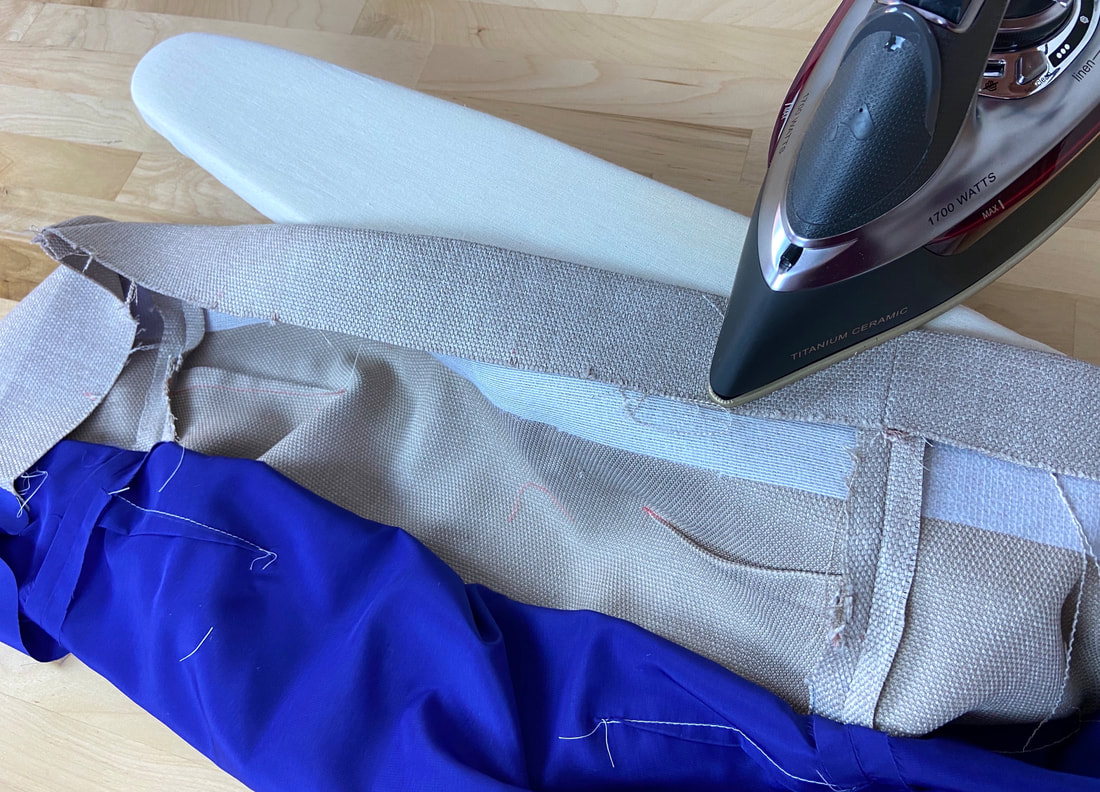Mini Tutorial: Sewing Lining At The Hem By Machine
While machine-finishing lining at the hem is quite simple in its construction, the alignment process can feel a bit confusing for sewing beginners. The main rule to follow? Keep fabric face sides touching throughout the entire construction process.
1. Start by folding the garment hem allowance toward the garment's wrong side. If your hemline is not marked directly on the fabric, use a ruler or gage pointer to measure the exact hem allowance width.
2. Iron as you fold to crease the finished hem.
3. If the lining layer is exactly the same length as the garment, you will have to trim it down to a shorter length.
Trim the lining's hem allowance down to 1". In this instance, it helps to have the hemline marked directly on the lining layer then measure 1" down to mark the new line. Cut carefully along this new cut line.
Trim the lining's hem allowance down to 1". In this instance, it helps to have the hemline marked directly on the lining layer then measure 1" down to mark the new line. Cut carefully along this new cut line.
4. From one of the garment's opening corners, align the lining's hem allowance edge to that of the garment with face sides touching. Insert pins perpendicular to the edges to secure. This process may feel a bit uncomfortable and confusing at first but if you adhere to the rule of matching face sides, you'll find that the process is quite intuitive. Pin to about halfway through the hem.
5. Machine stitch the hem allowance edges together at 1/2" allowance until you reach the midpoint (or where the pins stop). Backstitch at this point to secure.
When you turn the lining on its face side, half of the garment's hem should be finished while the other should remain open.
6. Repeat the alignment and pining process on the open end of the lining leaving a gap of about 5"-6" from the stitched end.
7. Starting at the gap, backstitch, then stitch the edges together at 1/2" allowance until you arrive at the garment's opening corner.
8. Flip the lining back on its right side. As a result, you should have an open gap at the hem's mid point. This gap's purpose it to allow flipping the lining layers back on their right side once fully sealed.
9. Fold the lining gap edge in at 1/2" and iron the fold to crease.
10. Slipstitch the folded edge of the lining to the hem allowance layer underneath. Make sure the open gap is in line with the rest of the stitched lining.
11. Once fully sealed, fold the lining over the hem allowance and iron gently to secure it in this position.
12. Last but not least, secure the hem allowance layer at each seamline using a cross tack or a plain whipstitch. The cross tack should be applied right underneath the lining stitch catching only the hem allowance and seam allowance layers between the fold- no stitching should be visible on the face of the garment.
The finished, machine-stitched lining should have no visible stitching both on the right and wrong side of the garment. The lining's natural fold should sit about 3/4" up from the finished hemline serving an important role in the lining's functionality. The fold allows enough excess in the lining layer to move with the rest of the garment without causing any pulling or tension.
















